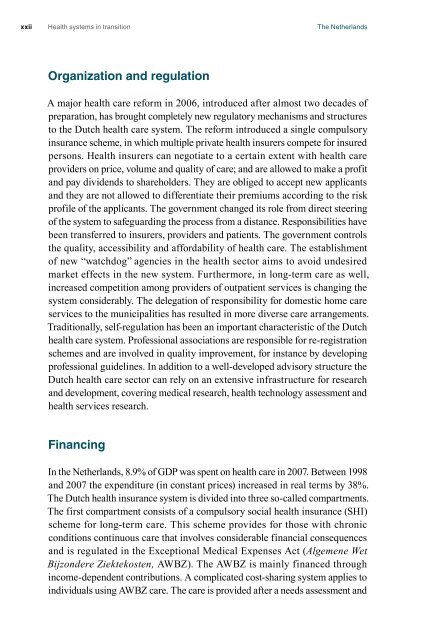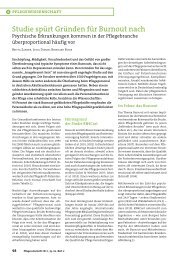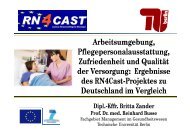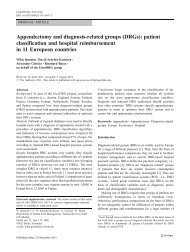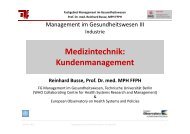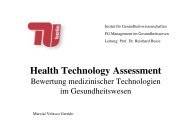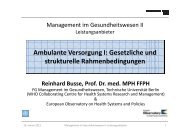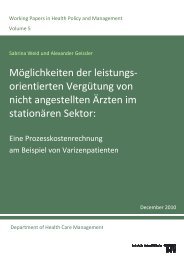The Netherlands: Health System Review 2010
The Netherlands: Health System Review 2010
The Netherlands: Health System Review 2010
Create successful ePaper yourself
Turn your PDF publications into a flip-book with our unique Google optimized e-Paper software.
xxii<br />
<strong>Health</strong> systems in transition <strong>The</strong> <strong>Netherlands</strong><br />
Organization and regulation<br />
A major health care reform in 2006, introduced after almost two decades of<br />
preparation, has brought completely new regulatory mechanisms and structures<br />
to the Dutch health care system. <strong>The</strong> reform introduced a single compulsory<br />
insurance scheme, in which multiple private health insurers compete for insured<br />
persons. <strong>Health</strong> insurers can negotiate to a certain extent with health care<br />
providers on price, volume and quality of care; and are allowed to make a profit<br />
and pay dividends to shareholders. <strong>The</strong>y are obliged to accept new applicants<br />
and they are not allowed to differentiate their premiums according to the risk<br />
profile of the applicants. <strong>The</strong> government changed its role from direct steering<br />
of the system to safeguarding the process from a distance. Responsibilities have<br />
been transferred to insurers, providers and patients. <strong>The</strong> government controls<br />
the quality, accessibility and affordability of health care. <strong>The</strong> establishment<br />
of new “watchdog” agencies in the health sector aims to avoid undesired<br />
market effects in the new system. Furthermore, in long-term care as well,<br />
increased competition among providers of outpatient services is changing the<br />
system considerably. <strong>The</strong> delegation of responsibility for domestic home care<br />
services to the municipalities has resulted in more diverse care arrangements.<br />
Traditionally, self-regulation has been an important characteristic of the Dutch<br />
health care system. Professional associations are responsible for re-registration<br />
schemes and are involved in quality improvement, for instance by developing<br />
professional guidelines. In addition to a well-developed advisory structure the<br />
Dutch health care sector can rely on an extensive infrastructure for research<br />
and development, covering medical research, health technology assessment and<br />
health services research.<br />
Financing<br />
In the <strong>Netherlands</strong>, 8.9% of GDP was spent on health care in 2007. Between 1998<br />
and 2007 the expenditure (in constant prices) increased in real terms by 38%.<br />
<strong>The</strong> Dutch health insurance system is divided into three so-called compartments.<br />
<strong>The</strong> first compartment consists of a compulsory social health insurance (SHI)<br />
scheme for long-term care. This scheme provides for those with chronic<br />
conditions continuous care that involves considerable financial consequences<br />
and is regulated in the Exceptional Medical Expenses Act (Algemene Wet<br />
Bijzondere Ziektekosten, AWBZ). <strong>The</strong> AWBZ is mainly financed through<br />
income-dependent contributions. A complicated cost-sharing system applies to<br />
individuals using AWBZ care. <strong>The</strong> care is provided after a needs assessment and


